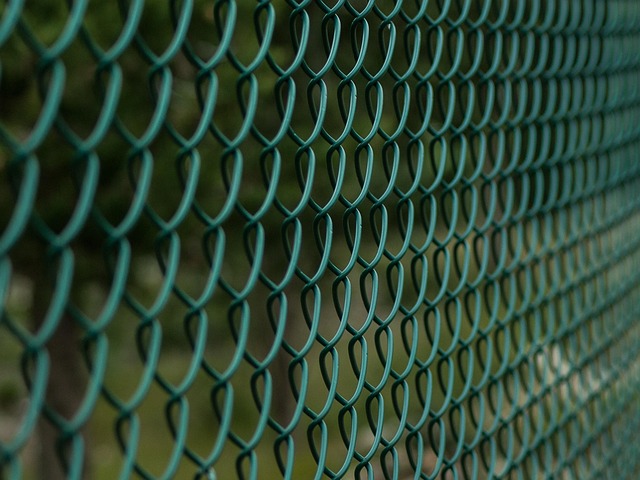Coastal areas present unique challenges for fencing due to harsh weather conditions, including high winds, salt air, and regular exposure to moisture. This article explores durable wooden fencing as a robust solution for these environments. We’ll delve into the advantages of this material, guide you through choosing the ideal wood species, provide installation tips tailored for coastlines, offer maintenance advice to ensure longevity, and discuss environmental benefits.
- Understanding Coastal Fencing Challenges
- Advantages of Durable Wooden Fencing
- Choosing the Right Wood Species
- Installation Considerations for Coastlines
- Maintenance Tips for Longevity
- Environmental Impact and Benefits
Understanding Coastal Fencing Challenges
Coastal areas present unique challenges for fencing due to harsh weather conditions, including high winds, salt mist, and frequent storms. Traditional materials like metal or vinyl can degrade quickly in these environments, making them less durable and aesthetically pleasing over time. The relentless pounding of waves and strong currents poses a constant threat to structural integrity, leading to regular maintenance or premature replacement.
Wooden fencing offers an attractive alternative that can withstand coastal conditions with the right treatment. Durable, natural wood species like cedar or treated timber are resistant to rot and insects, ensuring longevity even in salt-prone environments. Proper sealing and regular maintenance can further extend the life of these fences, providing a robust and visually appealing solution for homes, businesses, and public spaces along the coast.
Advantages of Durable Wooden Fencing
Durable wooden fencing offers numerous advantages for coastal areas, where traditional materials might struggle against salt air and extreme weather conditions. First and foremost, wood is an aesthetically pleasing option that can enhance the curb appeal of any property. Its natural beauty adds warmth and character to outdoor spaces, creating a welcoming atmosphere. Unlike synthetic materials, wood provides excellent insulation, helping to regulate temperatures inside homes, which can lead to reduced energy costs.
Moreover, durable wooden fencing is an eco-friendly choice. It is a renewable resource that can be sustainably managed, ensuring a constant supply for future projects. This type of fencing also offers flexibility in terms of design and customization, allowing homeowners and developers to create unique and personalized barriers that complement the surrounding environment.
Choosing the Right Wood Species
When selecting wood for coastal fencing, understanding the unique challenges posed by salt air and moisture is paramount. Not all woods are created equal in this regard. Softwoods like cedar and redwood are popular choices due to their natural resistance to rot and insect damage. These species have a higher oil content that repels water and salt spray.
Hardwoods, while heavier and potentially more expensive, offer exceptional durability for coastal environments. Species such as ipe or teak possess dense grains that minimize water absorption, making them highly resistant to warping and decay. Additionally, their natural oils provide an effective barrier against mold and mildew, ensuring the fence remains in top condition even under harsh weather conditions.
Installation Considerations for Coastlines
When installing durable wooden fencing in coastal areas, several unique considerations come into play. The harsh marine environment demands extra care to ensure longevity and strength. One crucial aspect is selecting suitable wood species resistant to rot and decay, such as treated cedar or redwood. These materials are naturally resilient against salt spray and moisture, vital for withstanding the coastal climate.
Another key factor is proper drainage. Effective water management is essential to prevent moisture buildup around the fence posts. This can involve installing specialized drainage systems or ensuring adequate spacing between posts to allow for water flow. Additionally, securing the fence to solid anchors or preparing the ground to minimize movement will enhance stability against strong coastal winds and waves.
Maintenance Tips for Longevity
To ensure your durable wooden fencing stands the test of time in coastal areas, regular maintenance is key. Start by inspecting the fence periodically for any signs of damage or rot, especially after harsh weather events like storms or heavy rainfall. Addressing issues early can prevent small problems from turning into major repairs.
Cleaning is another vital aspect of upkeep. Remove salt buildup and algae growth with a soft brush and mild detergent. Avoid using pressure washers, as they can strip the finish and damage the wood. Finally, reapply a fresh coat of protective sealant every few years to shield the fence from moisture and UV rays, extending its lifespan significantly.
Environmental Impact and Benefits
Wooden fencing, especially when made from durable coastal-grade lumber, offers numerous environmental advantages for coastal areas. The natural material’s ability to withstand harsh weather conditions reduces the need for frequent replacements, minimizing waste and lowering the carbon footprint associated with manufacturing new fences. Unlike synthetic alternatives, wood is a renewable resource when sourced responsibly, ensuring long-term sustainability without contributing to petrochemical dependency.
Furthermore, wooden fencing can contribute to local ecosystems by providing habitats for coastal wildlife. The organic material allows roots to anchor and grow, preventing soil erosion while enhancing the overall health of shorelines. By choosing durable wood options, residents can enjoy both the aesthetic appeal and ecological benefits of natural barriers that seamlessly blend into the coastal landscape.
